Sewing Machine Anatomy
Knee Bone Connected to the Thigh Bone: How a Sewing Machine's Internal Parts Connect to Each Other
Greetings everybody,
This edition of The Sewing Machine Newsletter was inspired by the “Knee Bone Connects to the Thigh Bone” children’s song and aims to offer a basic explanation of how a sewing machine works. It is by no means a sufficient explanation, for modern sewing machines are quite complex and there is a ton of minutia to comb through. However, I think this simple overview will be helpful and interesting to a lot of people.
Thank you for reading.
-Cale
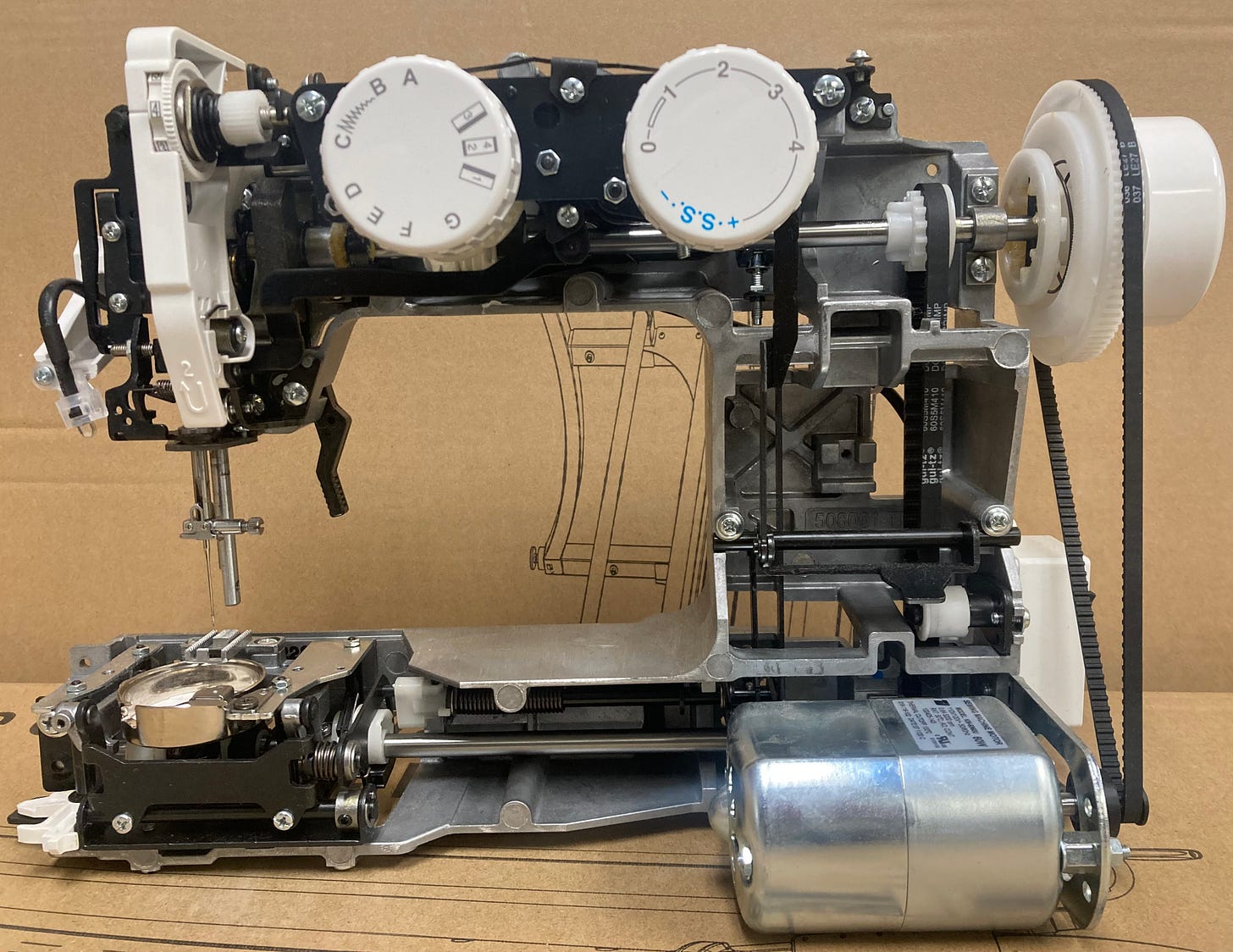
Toe bone connected to the foot bone
Foot bone connected to the heel bone
Heel bone connected to the ankle bone
Ankle bone connected to the leg bone
Leg bone connected to the knee bone
Knee bone connected to the thigh bone
Thigh bone connected to the hip bone
Hip bone connected to the back bone
Back bone connected to the shoulder bone
Shoulder bone connected to the neck bone
Neck bone connected to the head bone
Hear the word of the Lord.
“Dem Bones”
Composed by James Weldon Johnson & J. Rosamond Johnson in 1928
Dem Sewing Machine Bones!
The foot pedal connects to the motor.
The motor connects to the motor belt.
The motor belt connects to the handwheel.
The handwheel connects to the upper shaft.
When we press down on the foot pedal, the motor turns over, which turns the motor belt, which turns the handwheel, which turns the machine’s upper shaft.
The upper shaft is connected to the takeup lever mechanism.
The takeup lever mechanism is connected to the needle bar.
The needle bar is connected to the needle.
As the upper shaft turns, the takeup lever mechanism turns and the needle bar moves up and down, sending the needle down below the needle plate and back up again. The action of the needle is a part of the process that helps form the knot down below the needle plate. Meanwhile, the action of the takeup lever moving upward helps cinch that knot up into the fabric.
The upper shaft is also connected to the timing belt.
The timing belt is connected to the lower shaft.
When the upper shaft turns, the timing belt turns, which causes the lower shaft to turn.
The lower shaft is connected to the hook.
The lower shaft is also connected to the feed dogs.
Both hook and feed dogs connect to the lower shaft, which connects to the timing belt, which connects to the upper shaft, which connects to the needle bar and needle.
Now, every part I just mentioned is connected to the machine’s housing. What do I mean when I say housing? Simply put, it is a sewing machine’s version of the foundation of a house. Or, here’s another analogy: if a sewing machine is a tree, then the housing is the trunk and all the critical components I just mentioned above are the branches.
If you have a quality machine, then the housing is made of metal. All the machine’s critical internal components stem out of that metal housing. For example, the motor is connected to the metal housing. The upper shaft and lower shaft are also both connected to the metal housing.
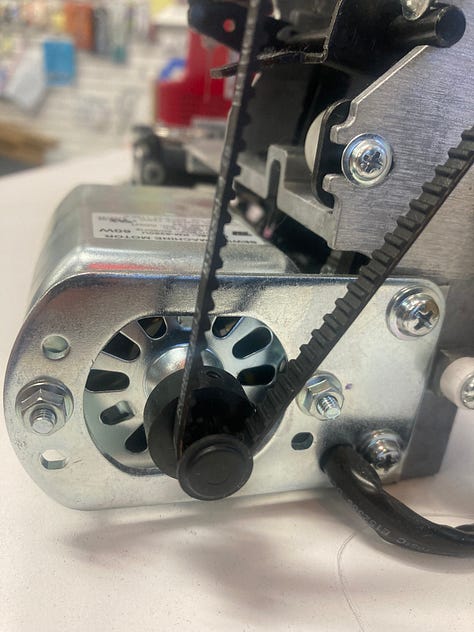

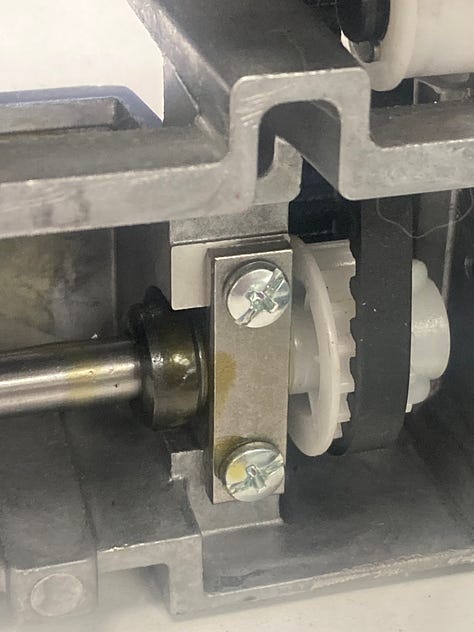
Other parts I haven’t mentioned, such as the presser foot bar and the upper tension mechanism, are also connected to the metal housing. These are all critical internal components of the sewing machine, and I cannot stress enough the importance of having a machine that links together all these critical components through a stable metal foundation.
A common sentiment I hear expressed from customers at The Sewing Machine Shop is the disappointment that modern sewing machines are made of plastic. This is not necessarily true. There are many quality modern machines that have a plastic outer shell, but the machine’s housing is made of metal, and that is what matters most.
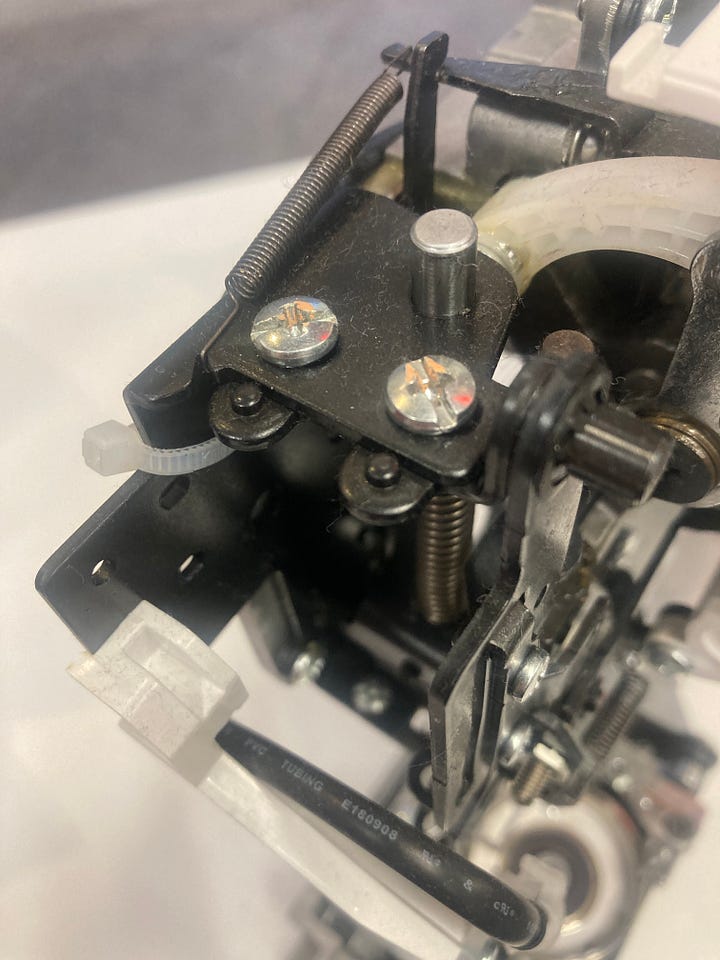
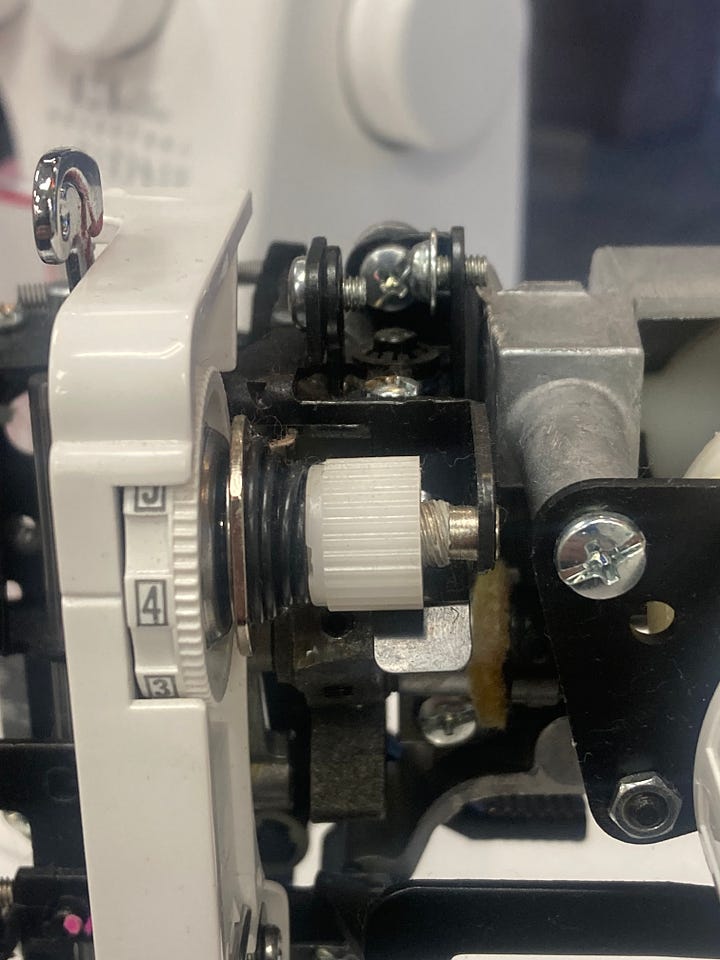
Here is a quick video I made that shows how all these parts on the machine work together to make a stitch:
I hope you found this article helpful. In writing this, I got a ton of ideas of different sewing machine topics I ought to cover in future articles— the importance of metal housing, what it means for a machine to be out of time, tension, sensors, stepper motors, etc, etc.
Thank you for reading.
Happy New Year.
-Cale





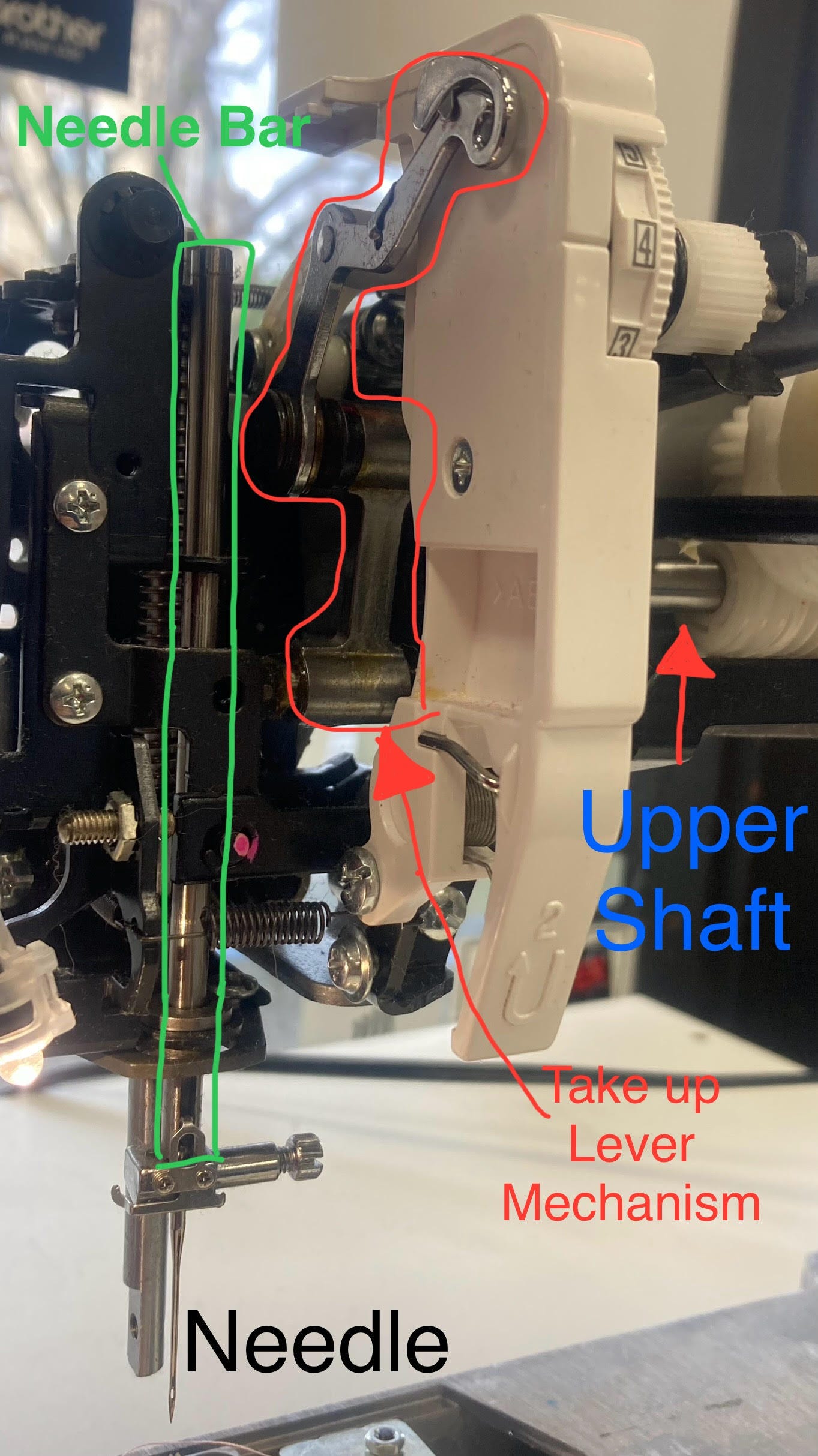
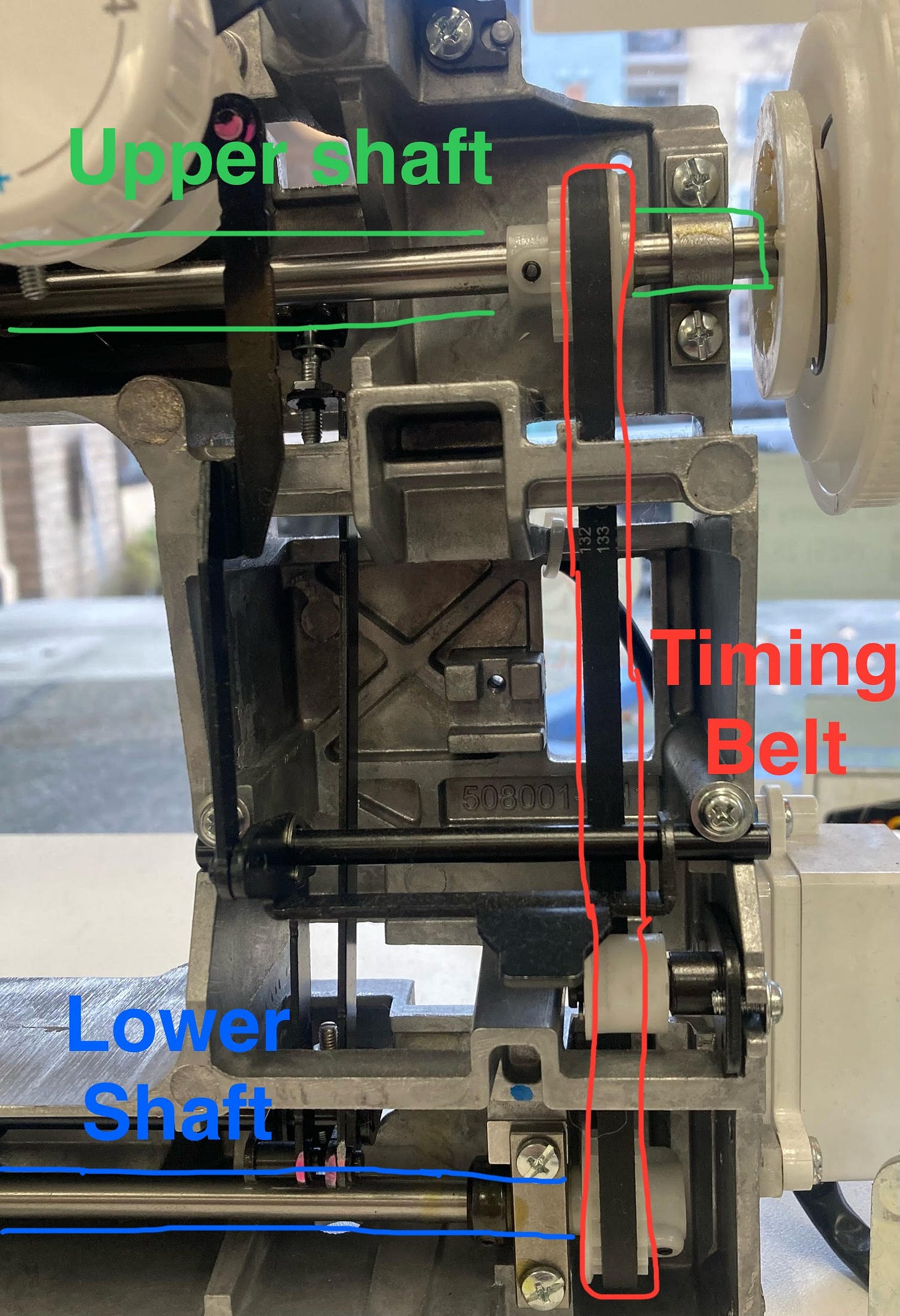
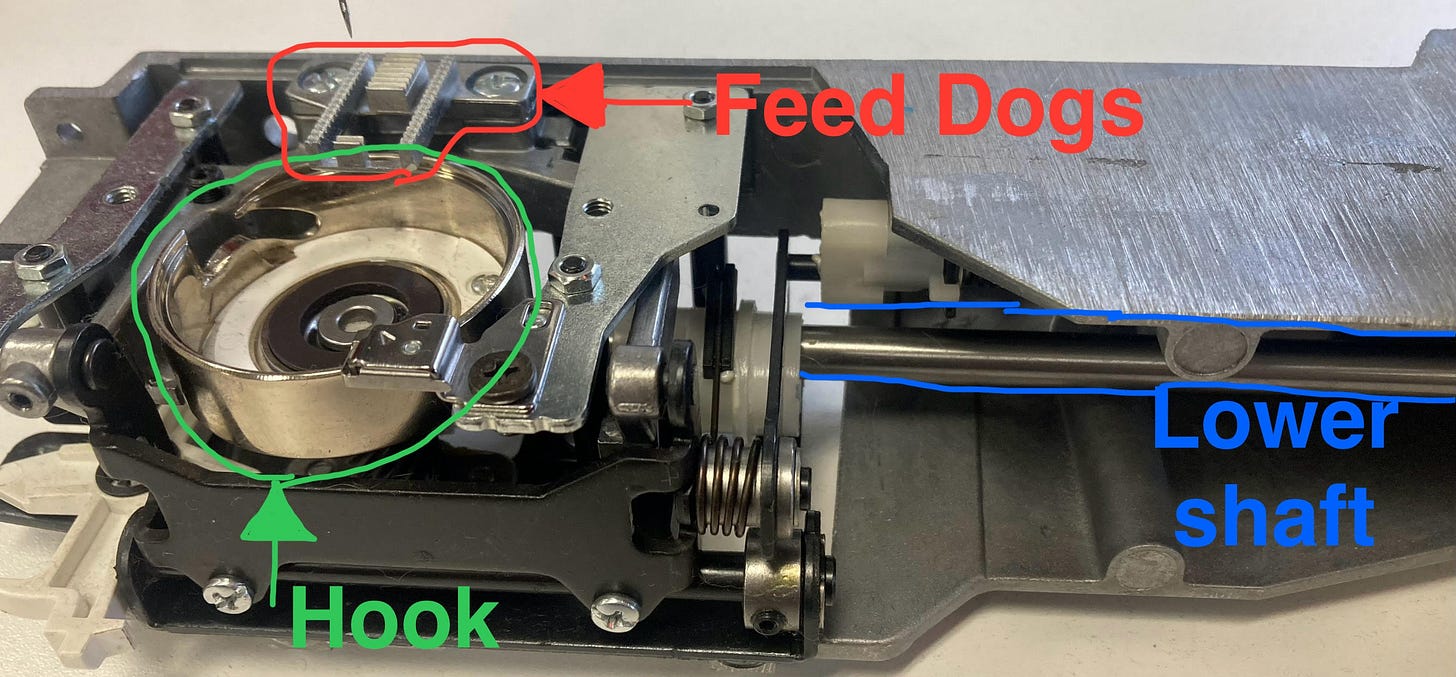
I am really enjoying your newsletter articles, Cale. This one is especially interesting and the video really helped to bring it all together.
Perfect! My five-year-old grandchild was just asking me how a sewing machine works.